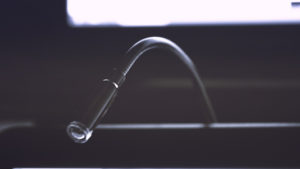
Like other appliances that use water, dishwashers are vulnerable to clogging. Left untreated, clogs can leave your dishwasher unable to function optimally.
You may not need to call a plumber, though. If you’re more of a DIY person, here are the steps you can take to fix a clogged dishwasher.
What you’ll need:
- A garden hose
- Flashlight (optional)
- Clean rag
- Wire coat hanger (optional)
- Screwdriver
- Pliers
- Pan (to trap debris and water)
Dishwasher Not Draining?
Step 1: Turn the dishwasher off
Otherwise, you’ll risk electrocuting yourself while repairing the dishwasher. Don’t forget to remove silverware and other dishes from the dishwasher.
Step 2: Detach the kickplate
You can find the kickplate just below the dishwasher. How you’ll remove the kickplate will depend on the style of its fasteners. For example, some fasteners can be removed by pulling them, while others may require a screwdriver. Set the fasteners aside in a plastic bag.
Step 3: Remove water with a towel
To prevent falling or slipping while working on the clogged dishwasher, wipe off any surrounding water with a towel.
Step 4: Find the drain hose

If your dishwasher is backing up it’s possible that the drain hose is clogged. Located behind the dishwasher or under your sink, the drain hose runs between the drain and the dishwasher pump. If it’s too dark to see, use a flashlight.
Step 5: Detach the drain hose
You can also use your flashlight to check where the hose connects to the pump. You’ll see a wire clamp, which you can loosen by pinching it with pliers.
Pull the drain hose and detach it from beneath the machine. With older models, you may need to wiggle the hose back and forth a couple of times before it loosens. Make sure you keep all the parts in a safe place.
Step 6: Inspect the drain hose
Check the drain hose for signs of deterioration, such as cracking or brittleness. If you spot any of these, it’s best to replace the hose ASAP.
Step 7: Clean the dishwasher’s drain hose
If the drain hose is clogged, but is otherwise in good condition, that’s the time you can start cleaning.
Before you do, have a dish or a pan beneath the dishwasher in case of water spills. Use commercial de-cloggers or make your own.
Step 8: Break the clogs physically
If the blockage is severe, you can loosen it by bending the hose back and forth. Do this for every few inches for the entire length of the hose. Focus on areas that you feel have more resistance than usual.
Position the end of your hose over a bucket or a drip pan while you’re physically breaking up clogs. This will help catch anything that falls out.
Step 9: Use a garden hose to flush out the drain hose

Eject blockages by directing a stream of water to one end of your drain hose. You can also use faucets with the same water pressure as a garden hose.
If you don’t have a garden hose, or if your garden hose is also defective, use a wire coat hanger instead. Straighten it out with pliers, then pass it through the hose to unclog.
Be careful with this method, though. If the wire coat hanger isn’t completely straightened, it could scratch the drain hose and damage it further.
Step 10: Reconnect the hoses and check for leaks.
Apply firm pressure when reconnecting the drain hose to the pump. Put the hose in place using wire clamps, and pinch the clamps firmly with pliers.
Don’t forget to check whether the hose is leaking or not. Run the dishwasher like you normally would, and observe if there’s anything out of the ordinary.
As you can see, you can fix a clogged dishwasher on your own. However, if the dishwasher won’t drain even after doing the steps above, the best thing to do is to consult a plumber. After exhausting this DIY approach and consulting with a plumber, it’s possible that the drainage issue could be the result of a grease trap that needs to be cleaned. If so, please contact a professional grease trap cleaning company. We would be happy to help you out!




